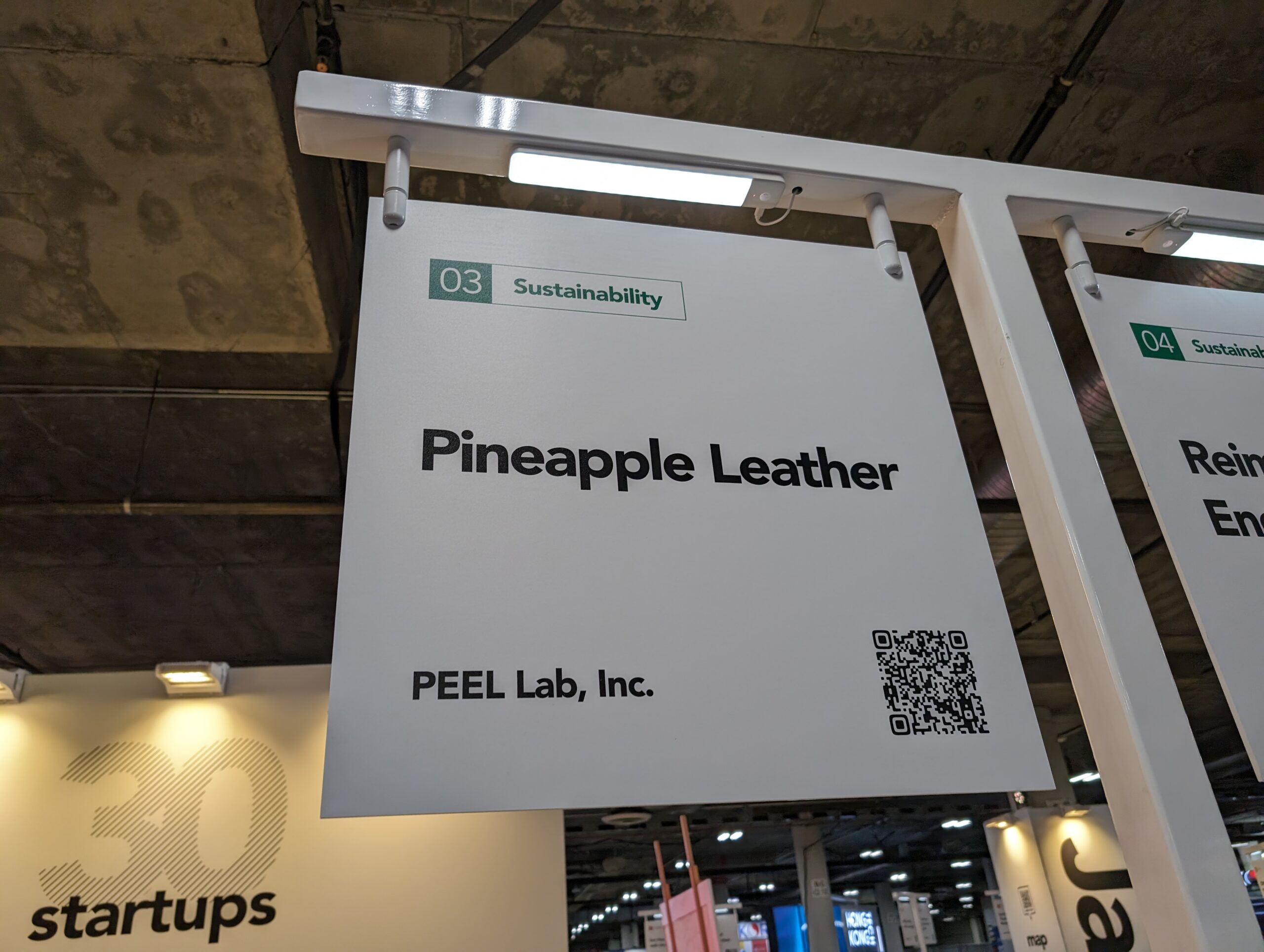Sign up for daily news updates from CleanTechnica on email. Or follow us on Google News!
To better understand important dynamics at play in flood-prone coastal areas, Oak Ridge National Laboratory scientists working on simulations of Earth’s carbon and nutrient cycles paid a visit to experimentalists gathering data in a Texas wetland. There, the return of a key mangrove species holds important clues to current and future climate impacts in coastal ecosystems.
ORNL’s Ben Sulman and Shannon Jones traveled this summer to Port Aransas, Texas, where black mangroves are experiencing a rebirth after being devastated by an extreme freeze in 2021. Mangroves, which thrive in salty, brackish water, defend coastal ecosystems from storm surge and provide important habitat for fish, reptiles and birds. They support the fishing industry, remove carbon from the atmosphere and could expand along U.S. Gulf coasts as the climate warms.
Mangroves and other coastal processes affecting the carbon and nitrogen cycles are underrepresented in current Earth-scale land system models. By observing the collection of data along the Texas coast, Sulman and Jones gained a better understanding of the conditions and dynamics needed to improve large-scale Earth simulations that can better predict and help prepare coastal communities for flooding and other climate-related risks.
Jones is a postdoctoral researcher with a background in hydrology and flood modeling. She is working with Sulman on representing biogeochemical processes in coastal wetland models to better predict ecosystem responses to climate change, human activity and sea level rise. The work is part of a Department of Energy Early Career Research Program award led by Sulman. Jones’ goal is to assess changes in carbon and nitrogen cycling in these ecosystems in DOE’s Exascale Earth System, or E3SM, land model, known as ELM, with a focus on the effects of mangrove expansion into salt marsh areas.
The ORNL scientists joined field excursion leads from the University of Texas, Austin and collaborators from the U.S. Geological Survey and the University of Louisiana, Lafayette. In this firsthand account, Jones describes the field work experience and how it is informing her current research.
Sailing towards mangrove ecosystem recovery
I reached out to UT-Austin scientists to discuss the main characteristics of mangrove nutrient cycling that differentiate them from other wetland plant species. A university team led by Ashley Matheny had been collecting data at a coastal Texas mangrove site that is providing unique insights into how the ecosystem is recovering after a deep freeze event in 2021. This piqued my interest and Ben’s as we are focused on defining, or parameterizing, the limits of survival for plants in the model to more accurately simulate wetland plants that live in highly dynamic areas. We decided to join a field excursion organized and led by Matheny.
We got an early start on the day of the field sampling trip, leaving from the University of Texas’s Marine Science Institute, or UT MSI, at Port Aransas. The mangrove site, only accessible by boat, is located on an island in Aransas Bay between the mainland and the barrier island. At 7 a.m., we met with Ashley Matheny, Melinda Martinez of the U.S. Geological Survey and two graduate students, Robert Bordelon and Aaron Gondran from UL, Lafayette, for a quick safety briefing, to discuss the field plan, and load the equipment into the boat. The eight-seater boat is owned and operated by UT MSI and was driven by a licensed UT MSI boat captain.
The waves were calm as the boat took off from the dock. A mist of salt and waves filled the air as the boat headed towards the island. The boat ride took approximately 20 minutes through a shipping channel to Harbor Island near a historic lighthouse.
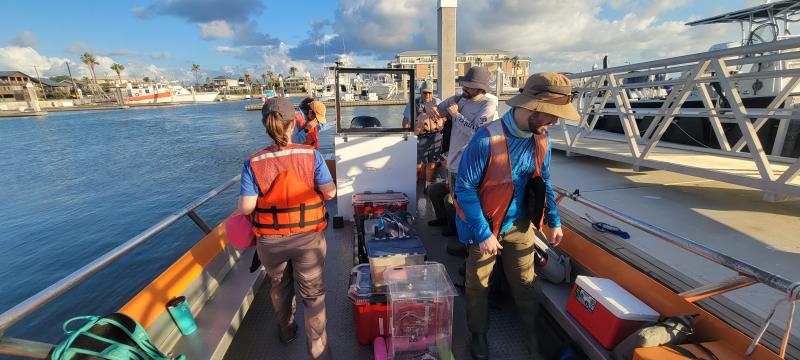
Launching from the dock with our collaborators and the equipment. Credit: Shannon Jones/ORNL, U.S. Dept. of Energy
Once we got to the site, we stepped off the boat into squishy mud surrounded by an eerie “ghost forest” of stunted, dead mangroves in 2 feet of water. Prior to the 2021 freeze, the ecosystem had been healthy and dense, with roots that provided stability for the mud. Now, all that was left of most of the mature mangroves were the dead branches that no longer held the sediment together, causing our boots to sink a bit, making it tricky to walk.
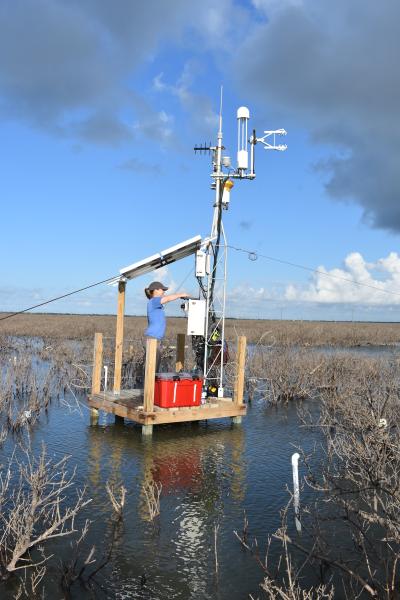
Ashley Matheny performing maintenance on a 10-foot flux tower in 1 foot of standing water within the ghost forest of mangroves in the Aransas Bay. Credit: Ben Sulman/ORNL, U.S. Dept. of Energy
Once the equipment was loaded off the boat onto a floating raft, each of the collaborators began working on different data collection tasks as we observed and assisted. Matheny headed to the other side of the mangrove stand to re-calibrate and collect data from a flux tower that she installed a few years ago. The tower measures carbon dioxide and methane gas exchange between the ecosystem and the atmosphere as well as temperature, precipitation and wind direction and speed, among other weather data.
While Matheny worked on the flux tower, the other collaborators collected data using two main instruments: porewater sippers and a greenhouse gas flux chamber. Porewater, which is the water found in the open spaces beneath the soil surface, was collected using a “sipper” — a device made of stainless steel tubing with a sampling port inserted into small holes in the sediment. Sippers use a pump to extract the soil water, which is brought back to the lab and analyzed for carbon dioxide, methane, and nitrous oxide concentrations. A clear floating chamber connected to a portable analyzer was used to measure carbon dioxide and methane emissions from individual mangroves — both dead and alive — and the water surface.
Measuring these climate-warming gases is invaluable to determine how components of the ecosystem — plants, atmosphere and soil — absorb and release gases. These data help scientists confirm and understand the overall ecosystem gas fluxes measured from the flux tower.
The field day was long, but we benefitted from great weather. Due to the site location in the middle of a flooded wetland, there was no place to sit, so we were on our feet all day!

Taking porewater measurements in the sediment within the mangrove habitat. Credit: Shannon Jones/ORNL, U.S. Dept. of Energy.
As we engaged with collaborators during the collection, we learned important context about mangroves that we might have overlooked had we not visited the site. Interestingly, at this location and across the Gulf, these mangroves are considered dwarf species at 1 to 2 feet tall. Black mangroves, which grow as tall trees in more tropical climates, become smaller and shrubbier along the U.S. coastline, where their species range is limited by periodic freezes.
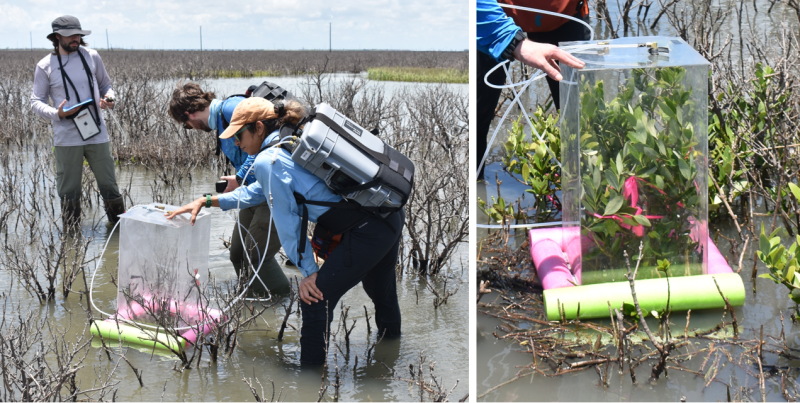
Measuring gas exchange over a dead mangrove (left) and a live one (right). Credit: Ben Sulman/ORNL, U.S. Dept. of Energy
The field day was long, but we benefitted from great weather. Due to the site location in the middle of a flooded wetland, there was no place to sit, so we were on our feet all day! As we engaged with collaborators during the collection, we learned important context about mangroves that we might have overlooked had we not visited the site. Interestingly, at this location and across the Gulf, these mangroves are considered dwarf species at 1 to 2 feet tall. Black mangroves, which grow as tall trees in more tropical climates, become smaller and shrubbier along the U.S. coastline, where their species range is limited by periodic freezes.
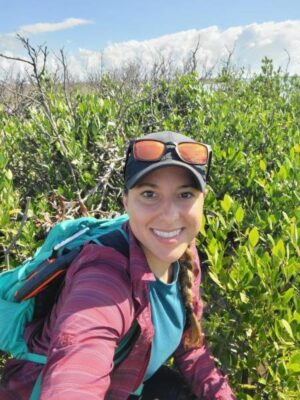
Shannon Jones standing among the surviving dwarf mangroves. Credit: Shannon Jones/ORNL, U.S. Dept. of Energy
By seeing firsthand how the ecosystem is responding in the aftermath of a major freeze and using this information to add limits to the wetland simulations, we can help predict how mangrove habitats may change or expand with a warmer climate in the future. After a full day of fieldwork, we headed back to shore, where we unloaded the equipment and celebrated a successful field day with dinner at The Gaff, a local favorite.
The next day, Ben and I met with Katie Swanson, stewardship coordinator for the Mission Aransas National Estuarine Research Reserve, and Matheny for a tour of the UT MSI facilities and a final collaborator meeting. Ben and I requested observational data that would be helpful to calibrate and compare to the modeled data. We discussed already-published articles and data, other collaborators with possible data, and the next steps forward in our collaboration. We left feeling elated about the successful field trip and continued partnership.
Harnessing data for mangrove insights
The hard work of data collection is invaluable and may not always be recognized in Earth system modeling. Thus, this research trip was important to establish connections with collaborators and to provide better overall understanding of conditions and important dynamics to include in model simulations. Ben and I embraced the Biological and Environmental Research program’s integrated model-observation-experiment, or ModEx, approach to ensure the model is using the most up-to-date field knowledge about mangrove ecosystems and to help inform areas where the model and field research can improve. As part of the preparation for the trip, we tested a new ORNL research safety summary that streamlines the process for nonfield personnel, such as modelers, to safely conduct site visits to gain familiarity with a site and observational methods.
Defining a new mangrove wetland plant to better represent carbon and nutrient cycling in the ELM model is important to simulate how different types of wetlands are and will change along the U.S. coast under different climate scenarios. I am now defining mangroves in ELM based on information from the field visit and data from the literature. The next step is to compare the model simulations of the mangrove ecosystem under extreme climate scenarios to patterns from observed data. I will test several scenarios to predict how carbon and nitrogen cycling in mangrove ecosystems may change due to long-term sea level rise, a major freeze and a major hurricane. The goal is to scale up to regional simulations of mangrove die-offs and expansion.
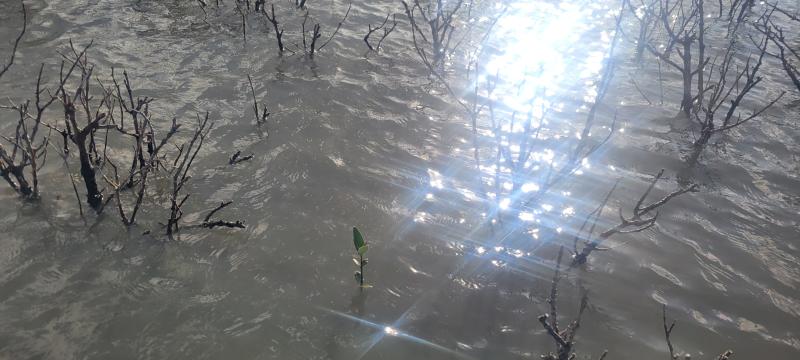
A single mangrove seedling in a ‘ghost forest’ of dead mangroves. Credit: Shannon Jones/ORNL, U.S. Dept. of Energy
UT-Battelle manages ORNL for the Department of Energy’s Office of Science, the single largest supporter of basic research in the physical sciences in the United States. The Office of Science is working to address some of the most pressing challenges of our time. For more information, please visit energy.gov/science.
Article courtesy of Oak Ridge National Laboratory. By Shannon Jones.
Have a tip for CleanTechnica? Want to advertise? Want to suggest a guest for our CleanTech Talk podcast? Contact us here.
EV Obsession Daily!
I don’t like paywalls. You don’t like paywalls. Who likes paywalls? Here at CleanTechnica, we implemented a limited paywall for a while, but it always felt wrong — and it was always tough to decide what we should put behind there. In theory, your most exclusive and best content goes behind a paywall. But then fewer people read it!! So, we’ve decided to completely nix paywalls here at CleanTechnica. But…
Thank you!
Tesla Sales in 2023, 2024, and 2030
CleanTechnica uses affiliate links. See our policy here.

